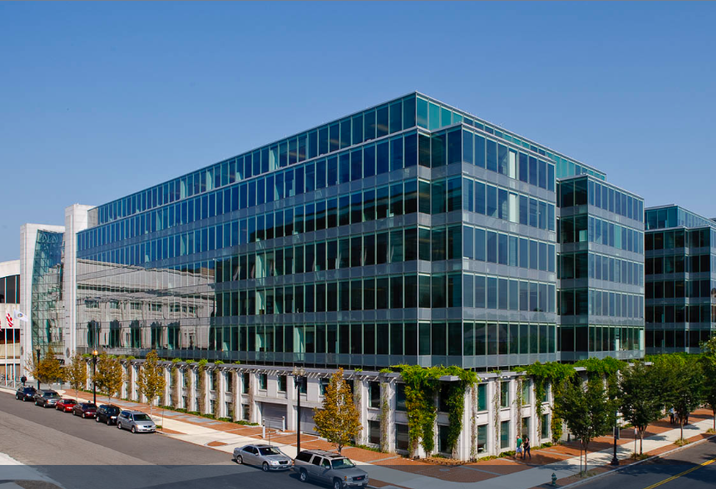DC Office Market Finishes 2023 With High Vacancy Rates
By Keith Loria January 4, 2024 3:06 pm
reprints
Offices in the Washington, D.C., metro area were emptier at the end of 2023 than they were a year previously — but at least they were bleeding tenants more slowly than in 2022.
Regional vacancy increased 100 basis points (bps) year-over-year, reaching 21.8 percent during the fourth quarter, while the vacancy rate in the District crept upward by 70 bps to end the year at a similar 21.2 percent, according to CBRE. That compares with a 210 bps increase posted in 2022.
Leasing activity in 2023 was also far below the pre-pandemic norm, but slightly above the 2022 low. There were 5.8 million square feet leased in the District in 2023, a slight increase over the 5.2 million square feet leased in 2022 but still much lower compared to the 8 million in 2021 and 7.3 million in 2020. D.C.’s pre-COVID years saw annual activity average around 9.6 million square feet, according to Savills/" title="Savills" class="company-link">Savills.
“D.C. remains a highly tenant-favorable market,” Arty Maharajh, Savills’ research director for the mid-Atlantic and Southeast, told Commercial Observer. “More available space making its way onto the market and a decrease in demand will put downward pressure on rents.”
The quarterly increases in vacancy were more muted than the annual decline. In the fourth quarter of 2023, vacancy in the District increased 10 bps over the prior quarter, while in Northern Virginia vacancy increased 30 bps to 23.3 percent. In Suburban Maryland, the office market recorded 194,000 square feet of occupancy loss and vacancy increased 60 bps to 19.8 percent.
“Continued push for return-to-office by employers would help limit the amount of space being returned to the market,” Miles Rodnan, research manager for Colliers, told Commercial Observer. “Numerous projects are poised for office-to-residential conversion, and as more of those commence, vacant buildings will be removed from the inventory, helping level off vacancy rates.”
Maharajh said that the office development and construction spigot is all but turned off, which helps keep vacancies in check.
“Some office properties will be converted to other uses, which will remove them from the office inventory and take away vacant space,” he said.
Colliers continues to see an increase in flight-to-quality, with tenants moving into higher-end space to the detriment of the lower-quality space — something that has been happening even before the pandemic.
“While this is still occurring, the limited deliveries expected in the coming quarters will help prevent vacancy numbers from increasing at the rate they had been in years past,” Rodnan said. “We are still waiting to witness any significant demand drivers that can offset lease downsizes. Deal velocity is still down from pre-pandemic levels but has improved over the past couple of years.”
The average asking rental rate for Class A office space slightly increased to $58.26 per square foot in the fourth quarter. However, there was a marginal decline in average asking rates overall, indicating a mixed trend in the market, according to CBRE.
In the fourth quarter of 2023, there was only a negligible increase in net absorption, though another measure, which may be more telling for 2024, was there was more office leasing in this past quarter compared to the previous year mainly because of short-term leases executed by the government.
The most notable lease was the 1.1 million-square-foot extension for the Securities and Exchange Commission at 101 First Avenue NE, part of the three-building Station Place development owned by Property Group Partners.
Additionally, the amount of sublet space has remained stable over the last year, and construction activity has been limited, according to Savills.
Looking forward, Maharajh expects government — both federal and city — to continue to execute short-term extensions, biding time until they figure out longer-term strategies.
“Expect more companies to continue to reduce their office footprint going forward as fewer people are coming into the office and the impact of technology caused a reduction in the need for paper storage and administrative staff,” Maharajh said. “Highly amenitized, high-quality buildings will continue to command a premium while owners of lesser properties will struggle and more buildings will be going back to their lenders.”
Rodnan still expects to see negative absorption in the market, but the flood of new vacant space should return to a stream.
“Spec suites will continue to be an attractive option for both tenants and ownership groups who may need help filling full floors,” he said.
Keith Loria can be reached at Kloria@commercialobserver.com.


